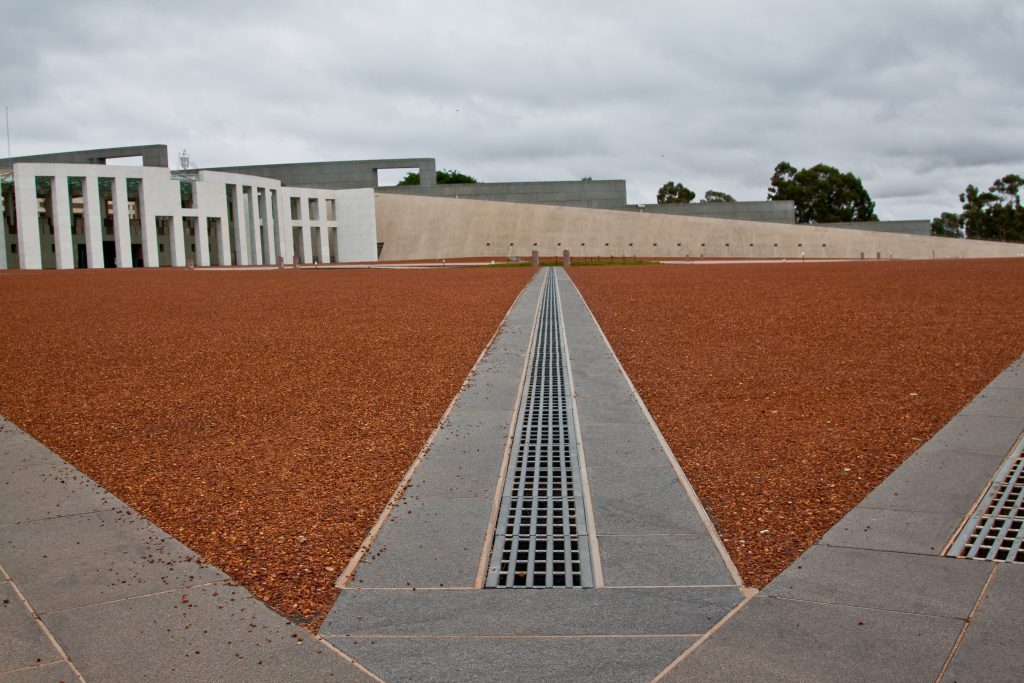
To see Australia’s $2 billion intelligence community, come for a stroll around Canberra’s parliamentary triangle. The expansion of bureaucratic empires is always expressed in concrete and marble, so there’s much to observe.
Your tour guide is the spirit of a judge, Robert Marsden Hope. The foundations of the intelligence community rest on Hope’s vision and his Canberra labours—from 1974 to 1985—among the spooks and spies and analysts and prime ministers.
The 2017 Independent Intelligence Review repeats the mantra that Hope’s ideas remain at the heart of the Australian intelligence community (a term Hope created). This series of interviews with one of the 2017 reviewers will start with the enduring Hope bequest.
Because Canberra’s purpose is the lives of Australians, the walk starts in front of a memorial—simple but detailed, mute yet telling—in a parliamentary garden opposite the House of Representatives’ entrance. The memorial bears the names of 91 Australians (citizens and residents) who died in the terrorist bombings in Bali in October 2002. For Australia, Bali and 9/11 are the attacks that announced the modern age of terrorism; Canberra’s response was to boost the bureaucracies and build
Leaving the memorial, climb up the steps to Parliament Drive, then turn to look across at the upper floors of the Department of Foreign Affairs and Trade. The Casey building (named after a Liberal foreign minister) is not just for pinstripes, tradies and aidies; it’s home to the overseas spies, the Australian Secret Intelligence Service. Formed in 1952, ASIS was so shadowy that it wasn’t referred to in parliament until 1975 and wasn’t publicly avowed until 1977. Hope brought ASIS into the half-light and saved it from execution by the Foreign Affairs establishment (such as the great mandarin Arthur Tange) who thought the spies too dangerous to keep.
Scout the edge of the parliamentary hill and turn down King’s Avenue. Crossing National Circuit, glance right and nod to Hope’s mob, the legal experts of Attorney-General’s, in the Robert Garran Offices, named after the first Australian Commonwealth public servant.
At the corner of Kings Avenue and National Circuit, you’ve reached the peak of the intelligence community, the Office of National Assessments, soon to become the Office of National Intelligence, seat of our new intelligence czar. In homage to the intelligence heritage, the heritage building is named for Robert Marsden Hope.
During the stroll, notice the mushrooming of concrete barriers around buildings to push out perimeters; this is a bomb-conscious city. Amble down Kings Avenue to the Australian Federal Police HQ, freshly installed behind the bollards of the Edmund Barton building, previously home to trade, agriculture and environment agencies. The AFP shifted to the parliamentary triangle from its old office across the lake in Civic as its role and resources surged in the modern age of terrorism. The AFP is a player worthy of the triangle.
Terminology has had to expand (see page 11 of the intelligence review): the six institutions of the Australian intelligence community are now part of the ‘broader National Intelligence Community’, a 10-member group including the AFP and Immigration/Border Force.
Continue across Kings Avenue Bridge towards the Department of Defence at Russell. Defence didn’t need new buildings to mark its place in the Canberra universe; all Russell ever craves is more car parking spaces.
To save trekking car parks, merely give a wave to the central symbol of Australia’s defence HQ: the eagle atop a 73-metre column. Built by donations from Australians as a ‘thank you’ after World War II, work on the Australian–American memorial started as the ANZUS treaty was created (thank you, alliance).
You can’t see it from the bridge, but one of the Defence buildings clustered around the eagle eyrie is the Australian Signals Directorate (formerly the Defence Signals Directorate), our bit of the Five Eyes signals partnership (US, Britain, Oz, Canada and New Zealand).
The old Defence Signals Bureau became a directorate in 1977, reflecting Hope’s recommendation that its importance be given greater recognition. The directorate relocated from Melbourne to Canberra in 1993, the last member of the intelligence community to depart the footy capital for the national capital. The 2017 review lifts ASD to independence, as a statutory authority within the Defence portfolio.
To see the winner in the recent edifice stakes, leave the bridge to walk beside Lake Burley Griffin to a tiny 150-year-old stone building, Blundells Cottage. Lift your gaze from the cottage to contemplate the most expensive construction project in Canberra since the new Parliament House was completed in 1988.
Behold ASIO’s HQ, accommodation for 1,800 people, a monument to what the terrorism age has built in Canberra. ASIO is still part of the parliamentary triangle—a geographic zone that houses institutions with true power in this town. Depending on your symbolism preference, ASIO’s staff stare across the lake at the High Court or lift their eyes to the giant flag atop Parliament House.
Next year, there’ll be a new beast expressing its existence in a building—Home Affairs. Perhaps Home will aim for those two venerable offices at the start of Anzac Parade, or maybe go modest-but-modern at Brindabella Park at the airport.
Like the existing edifices, Home will draw on Hope’s legacy. To discuss the Hope inheritance, here’s one of the 2017 reviewers, Michael L’Estrange, former cabinet secretary and secretary of DFAT (2005 to 2009). As a young public servant, L’Estrange served on Hope’s second royal commission.

